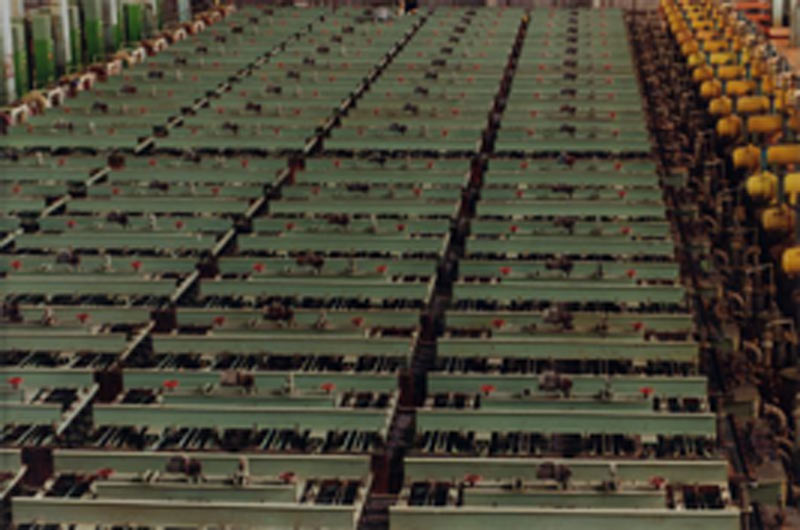Application of radiotracers in industrial processes
Members of our Department exert various activites on the industrial applications of the radiotracers, as well. For illustration, a persisting applied procedure is shown, namely the regular determination of the amount of mercury used in the process for production of chlorine in the largest Hungarian chlorine factory.
A huge amount of chlorine have been produced and consumed in various industrial processes. For production a common method is the so-called De Nora procedure, in which chlorine is produced by electrolytic separation from aqueous solution of sodium chloride. A few numbers may provide impression on the amounts of the input and circulated materials and on the size of the necessary equipments being used in the particular factory. The produced amount of chlorine is ca. 350 tons per day, the instantaneous power used for the electrolysis is 1.5 – 2 MW. Circulating mercury is used as cathode in the process, streaming in a thin layer at the bottom of the electrolysis cells. The amount of circulating mercury is c.a. 200 tons. For illustration, the view of a part of the cells is shown (the area covered by the photo is c.a. 10 m wide and 60 m long).

Fig. 1. View of the electrolysis cells used for chlorine
pruduction (the area shown is c.a. 10 x 60 m)
It is of great importance to know the exact amount of mercury present in the techological process by two reasons at least: i/ the price of the mercury is high (the price of the mentioned amount equals to ca. 4 million euros), ii/ mercury is poisoneous, its amount should always be in control, no loss is allowed. The geometry of the electrolysis appliances is rather sophisticated – the production is continuous, thus, to determine the total amount present in the technological process at a given moment is not an easy task.
This task can preferably be solved by using isotope dilution method. The suitable isotope is 203Hg. The isotope has a half life of 46.6 days and emits electrons (beta radiation of 492 keV). 203Hg can be procuded with neutron activation at the KFKI Atomic Energy Research Institute of BNC located in the same campus where our Institute is situated. The measurement is based on the the precise determination of the extent of actual dilution of the isotope. Tracing mercury in exactly determined activity (~ c.a. 220 MBq / cell) is introduced in a small volumes into the electrolysis cells. After one day circulation samples are taken from the cells and the exact extents of dilutions are determined by measuring the activities of diluted 203Hg. (The dilution is in the order of ten thousand. The count rate in these samples is ca. 2500 cps, allowing to provide a statistical error of 0.3 %). In other words, the accuracy reached in the determination of the total amount of mercury (~ 200 tons) in volume equivalent is a few liters by this method.

